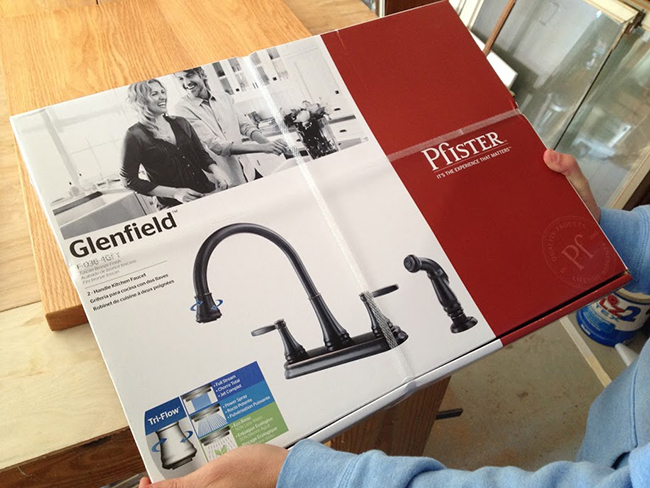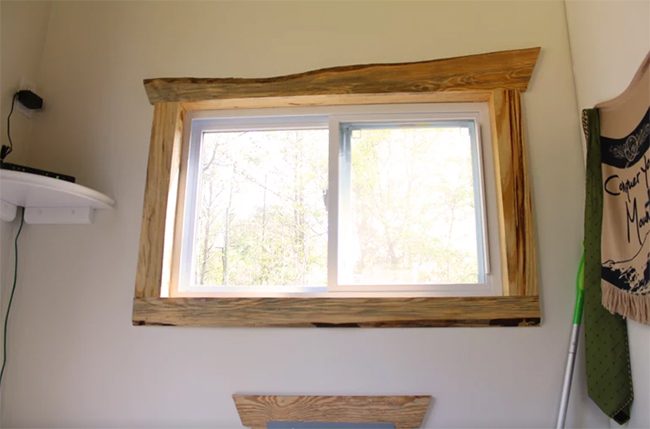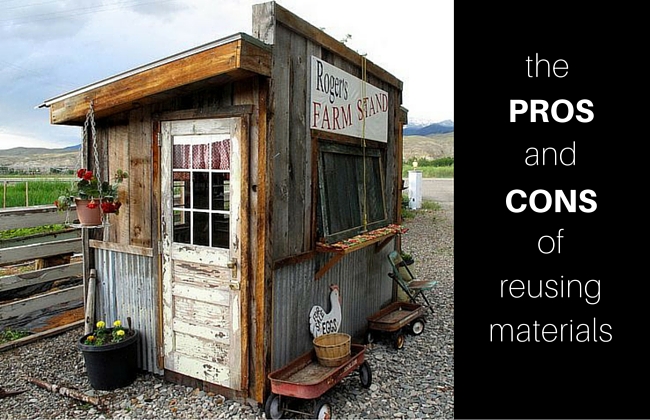I’ve been around this tiny house block for some time; years, in fact. I remember reading my first post by Kent. The year was 2010 and the article was about a guest cabin somewhere in North Dakota or Colorado or somewhere like that. (I have since found out it was Paul’s Guest House in Ennis, Montana that I originally read.) The house had a bit too much knotty pine and dark siding for my taste but it was cozy looking and had incredible views of the landscape. From that day forward I was a regular reader.
After we started building our tiny house I started paying much more attention to the posts: the details in the images, the construction quality of the featured houses, the tips and tricks, etc. In fact, one post that really sticks out to me is Catherine Zola’s post The Pros and Cons of Using Reclaimed Materials.
Written in November 2013 the post was thorough in its explanation of why some items in your home should be new while others can be repurposed or salvaged. Our build was almost 75% new construction except for one major thing: the trailer. That’s right. That’s our dirty little secret. While I am now known for being adamant regarding buying a brand new trailer built specifically for a tiny house, back in 2010 we were not so savvy. We purchased a 1976 (strike one) Shasta travel trailer (strike two) off of Craigslist (strike three!) because it fit our budget (can there be a strike four?) at the time and we didn’t quite think through the parable of building ones house on rock rather than sand. Luckily for us late 70s travel trailers were stout. They were well made at the time and the particular trailer we purchased was more than sufficient for us. But [almost] everything else – from the BluMotion drawer slides to the cork flooring – was brand, spanking new. During our build we opened more boxes and packaging than a kid on Christmas morning.

But we did use some salvaged materials and we did repurpose some things. At the time we did so more because of budget constraints and because we like the look that age had given the item. For instance, we could have purchased proper trim and molding. But there was just something about the look of rough cut lumber that had been laying around a neighbors barn that did something so much cooler than traditional baseboard and quarter round.

We also did a lot of framing with salvaged wood. Now when I say salvaged I don’t exactly mean it was used in another build. We were fortunate enough to get a pile of two-by’s from a local lumber yard. They called them “unusable” but after some trimming, shaping, and planing, they were incredible. You can even take a peek at some photos of that process if you like. I want to stop right here and throw a caution flag because after all, the title of this post is The Pros and Cons of Reusing Materials. What we did with our framing lumber was not something I would recommend everyone do. We happened to have the right tools, the right experience, and enough time, to do the job properly. Had we not had those things we would have purchased the lumber straight from the big box store.
But what about the average DIY builder that doesn’t have a workshop full of tools, a contractor for a dad, large chunks of time, and a desire to do things the less common way? Well, let’s look at some pros and cons.
PRO
- Less Expense. Typically salvaged materials cost just a fraction of the price of its brand new counterpart whether bought from a newspaper ad, found in a second-hand store, or taken from your brother-in-laws back pile. A low price allows you to purchase more, be a bit more picky, and challenge yourself to find cool, original pieces.
- Environmental Benefits. Producing new materials requires a lot of energy in regards to fossil fuels. Using salvaged materials requires little more than sweat equity.
- Just Looks Cool. I point back to my comment on our molding, trim, and casements. Older stuff has history. It has texture. There is a story to tell. Salvaged materials have a certain look to them that just speaks to the adventurous at heart.
CON
- Tough On The Budget. I am often bemused by the idea that the older something is the more it costs. For instance, some time ago in a salvage store I came across a few old Coke crates. They weren’t anything special; circa mid-1960s, even. But they had a bit of a worn look and they stacked well. The dealer was asking $15/each. I asked why. His response? Because someone will pay for them! Be careful when delineating between antique and salvage.
- Toxic. Be sure if you are going to salvage anything that is already painted that you have the paint checked for lead, if nothing else. Salvage materials can off-gas tremendous toxins.
- Bugs. Nothing like bringing home a very cool Amish chair made with mortice and tenon only to find out a multi-generational spider family had taken up residence in a crevice of the chair. Just give your salvage find a good once-over before giving it a new home.
Did I miss any tips? Do you have a story about salvaged materials? Did using them save you money or cost you in the long run?
By Andrew M. Odom for the [Tiny House Blog]


Another con might be that it could take more time than it’s worth to make your salvaged material ready to use. Pulling nails, culling rotten bits, replacing or repairing parts, etc. can take longer than you think and may still leave you with substandard items. You need to be very realistic in your appraisal of what used materials may mean for your particular situation.
To follow up what Alice H says, I would point out that searching and bringing home salvage materials can take a lot of extra time, too, as well as extra resources. Do you have a truck that can haul that french door? Do you want to use the gas to get it? Have you got the time to spare to drive there and back? Also, what will it take to find stuff that is consistent with the look you are trying to create? I suggest that you start by getting the most important (most expensive?) items first, i.e. windows, door(s), kitchen cabinets (if you’re buying them check out your nearest Habitat ReStore), and then find other items and detailing (new or old) that fit that look.
Excellent points Blake. Excellent.